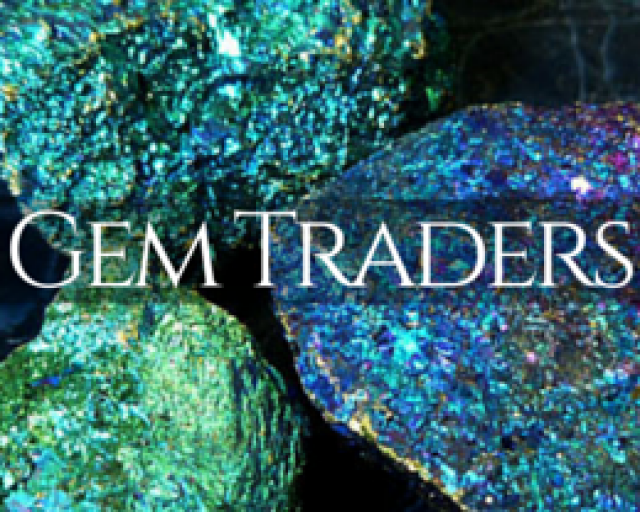No has pujado en esta subasta.
244GRAMS PARCEL POLISHED ROUGH ZEBRA ROCK GG2047
- SKU
- Dimensiones (mm)
- x x mm
- Peso (cts)
- Certified Gemstones
- No
- Colores
-
DESCRIPTION ZEBRA ROCK POLISHED
SOURCE WESTERN AUSTRALIA
SIZE LARGETS 55x40x10MM
PARCEL 10 PIECES AS PER IMAGE
This distinctive reddish-brown and white banded
ornamental stone from the East Kimberley, Western
Australia, has been known as zebra rock since its
discovery in 1924. Some of the original localities,
including one about 4.8km southwest of the former
Argyle Downs Station, are now submerged beneath
the dam waters of Lake Argyle, but there are others
which are still being exploited.
Zebra rock forms lenses and seams, some
extending for kilometres, within the Johnny Cake
Shale, which is of Late Precambrian age (around
670 million years old). The rock is an “argillite” or clay rock. It is largely made up of clay minerals but
also contains tiny angular fragments of quartz and mica flakes, and the mineral, hematite (an iron oxide),
which is the main iron-bearing mineral. Most of the clay is the common mineral kaolinite, which forms
during weathering of rocks (such as granite) containing feldspar and other aluminium silicates and can
be deposited as a sediment in water to eventually make a clay rock like a shale or mudstone.
- SKU
- Dimensiones (mm)
- x x mm
- Peso (cts)
- Certified Gemstones
- No
- Colores
-
DESCRIPTION ZEBRA ROCK POLISHED
SOURCE WESTERN AUSTRALIA
SIZE LARGETS 55x40x10MM
PARCEL 10 PIECES AS PER IMAGE
This distinctive reddish-brown and white banded
ornamental stone from the East Kimberley, Western
Australia, has been known as zebra rock since its
discovery in 1924. Some of the original localities,
including one about 4.8km southwest of the former
Argyle Downs Station, are now submerged beneath
the dam waters of Lake Argyle, but there are others
which are still being exploited.
Zebra rock forms lenses and seams, some
extending for kilometres, within the Johnny Cake
Shale, which is of Late Precambrian age (around
670 million years old). The rock is an “argillite” or clay rock. It is largely made up of clay minerals but
also contains tiny angular fragments of quartz and mica flakes, and the mineral, hematite (an iron oxide),
which is the main iron-bearing mineral. Most of the clay is the common mineral kaolinite, which forms
during weathering of rocks (such as granite) containing feldspar and other aluminium silicates and can
be deposited as a sediment in water to eventually make a clay rock like a shale or mudstone.
| Proveedor de envío | Envío a Australia | Envíos al resto del mundo |
|---|---|---|
| FedEx | $12.00 / 3 días días | $39.00 / 10 días días |
|
Australia
FedEx tiene descuento a $12.00 en pedidos con 2 o más artículos
Resto del mundo
FedEx tiene descuento a $39.00 en pedidos con 2 o más artículos
|
||
| Registered Shipping | $9.00 / 7 días días | $16.00 / 21 días días |
|
Australia
Registered Shipping tiene descuento a $9.00 en pedidos con 2 o más artículos
Resto del mundo
Registered Shipping tiene descuento a $16.00 en pedidos con 2 o más artículos
|
||

-
 Positivo
PositivoPaid and shipped - no feedback left after 100 days
-
 Positivo
PositivoJust as noted, nice set of jewelry.
-
 Positivo
PositivoReceived the pearls today and they are exactly as described.This seller responded very quickly and was a pleasure to buy from!Will buy more in future!Thank you.
-
 Positivo
PositivoBreathtaking stone, perfect packaging, fast shipment, recommendable seller, thank you.
-
 Positivo
PositivoBeautiful stone, perfect packaging, fast shipping, recommendable seller, thank you and happy New Year from Germany
-
 Positivo
PositivoVery special stone, fast shipment, reliable seller, thanks from Germany.
¿Por qué los usuarios se superan a sí mismos?
Cuando se realiza una oferta, este es el monto máximo que una persona está dispuesta a ofertar por el producto. Nuestro sistema ofertará automáticamente en nombre del postor y aumentará la oferta de manera gradual hasta el máximo para mantener su posición como el mejor postor.
Cuando hay un ícono que indica "Oferta automática", significa que nuestro sistema está realizando ofertas de forma activa para el postor en función de su oferta máxima. Esto puede parecer como si los postores estuvieran pujando más que ellos mismos, pero es simplemente el resultado de que el sistema actualiza la oferta para reflejar el límite máximo del postor.














